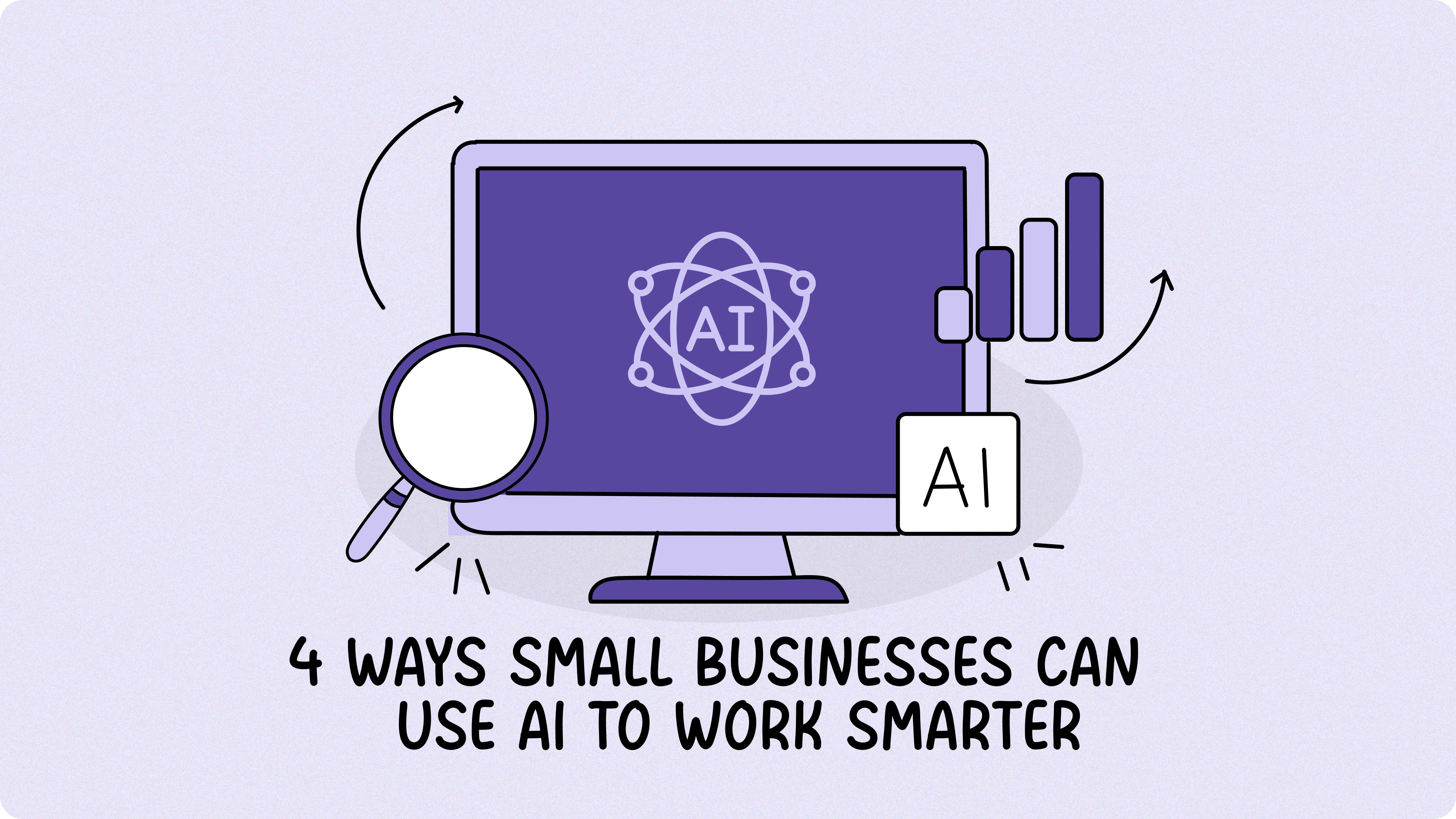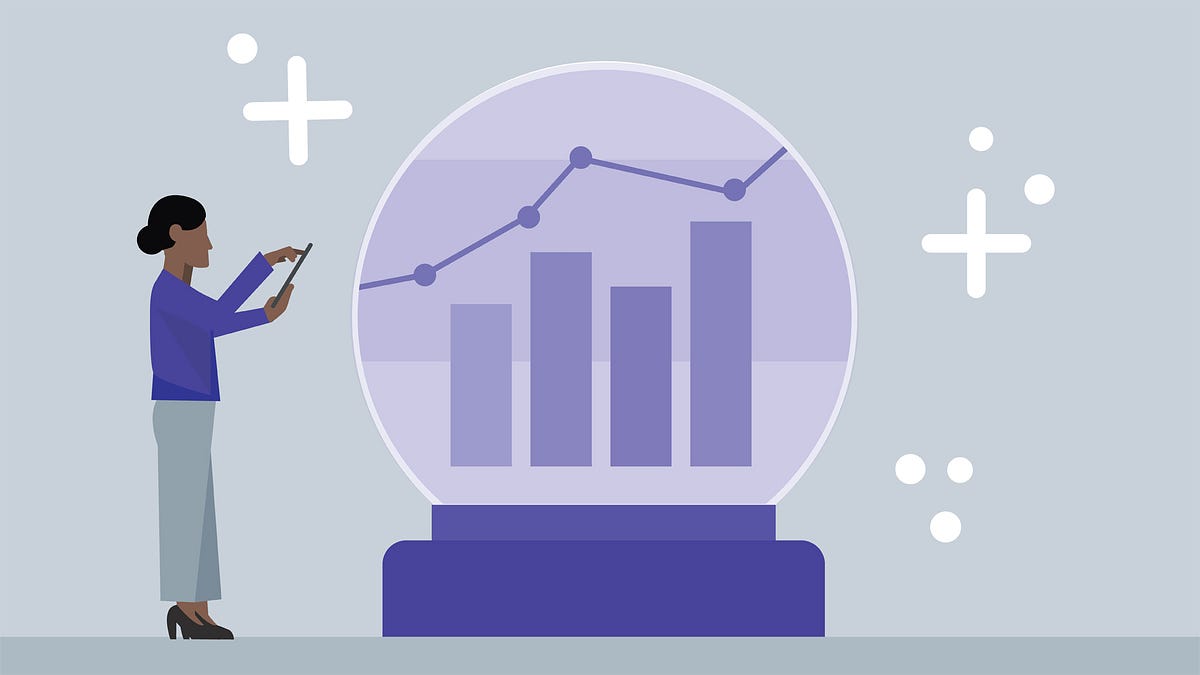If you own a small business, your daily to-do list is immense. You’re not just selling a product or service; you’re also the marketing manager, the bookkeeper, the customer service agent, and the scheduler. The routine work adds up fast, often taking half your week before you even get to the parts you love.
A solution for taking control of this workload is Artificial Intelligence (AI). According to a QuickBooks survey, almost 68% of small businesses in the U.S. are now using AI for business operations to regain valuable time.
Think of AI not as a complex system, but as smart automation—a feature built into the tools you already use. It’s designed to handle the most repetitive work for you, freeing you up to focus on strategy, client relationships, and the work that truly drives your business forward.
Here are four practical areas where you can start using AI immediately, along with clear steps on how to begin.
Table of Contents
- Understanding the Power of Learning Software
- Automate Bookkeeping and Expense Categorization
- Generate Marketing Content Drafts
- Implement 24/7 Customer Service Support
- Automate Simple Workflow Chains
- Reclaim Your Time, Focus on Growth
Understanding the Power of Learning Software
At its core, AI is software that learns from information. It doesn’t need complicated coding for every single task; it learns by recognizing patterns in data.
- Learning from Your Data: When you use AI in your bookkeeping, for example, it studies your past spending habits. It sees that you always categorize transactions from your phone company as “Utilities.” This ability to learn from past data and apply it to new transactions is called Machine Learning. The more you use the software, the faster and more accurate it becomes at predicting the correct category for everything.
- Creating New Content: When you use AI to help with marketing, it generates new text or ideas based on the vast amount of written language it has been trained on. This Generative AI acts as a powerful drafting tool, quickly providing you with a starting point for emails, social media posts, or website copy.
- The Benefit: By handling these learning and drafting tasks, AI reduces human error and frees up your mental energy to focus on strategy.
1. Automate Bookkeeping and Expense Categorization
Bookkeeping is a high-volume, rules-based task that steals valuable hours. Automating it not only saves time but also guarantees accuracy, which is crucial for tax compliance.
How to Start: Setting Up Automatic Expense Tracking
Step 1: Connect Your Financial Accounts. Start by securely linking your business bank accounts and credit cards to your AI-powered accounting software. This immediately eliminates manual data entry, as every transaction is recorded as soon as it happens.
Step 2: Guide the Categorization. The software’s Machine Learning feature will review transaction descriptions and suggest a financial category (e.g., “Advertising” for a Facebook charge). While the AI is learning your specific business, you will approve or quickly correct these suggestions. This training ensures the AI is perfectly accurate for your unique needs.
Step 3: Auto-Match Receipts. Use the mobile app feature to snap a photo of any paper receipt. The AI instantly reads the details (vendor, date, amount) and automatically matches it to the correct transaction in your bank feed. This action completes your record for tax purposes in seconds.
Why this matters: Automation dramatically reduces costly errors and administrative workload. Companies that automate expense reporting have seen the cost of processing each expense fall by up to 74%, directly boosting your bottom line.
Once your books start managing themselves, you stop chasing receipts and start making real financial decisions.
2. Generate Marketing Content Drafts
Facing a blank screen is one of the biggest blocks to consistent marketing. Generative AI eliminates this problem by quickly producing content drafts that you can refine.
How to Start: Drafting Your Next Campaign
Step 1: Choose a Simple Tool. Access a Generative AI tool (like an AI feature built into your email marketing platform) or a general-purpose writing model.
Step 2: Provide a Clear Command. Give the AI specific instructions on the topic, audience, and desired tone. For example: “Write three short email subject lines and a draft for a newsletter promoting a 20% discount on consulting services for new clients.”
Step 3: Personalize the Output. The AI gives you a finished draft—not the final product. Your job is to adjust the tone to sound exactly like your business and to ensure all facts and offers are correct. By letting the AI handle 80% of the writing, you save creative energy and time, focusing only on the final, human polish.
Why this matters: AI gives you the first draft, your voice gives it heart. Together, they make your marketing consistent and genuine.
3. Implement 24/7 Customer Service Support
Customers expect immediate answers, and AI-powered chatbots allow you to deliver instant service without needing a full-time support team.
How to Start: Setting Up a Simple FAQ Chatbot
Step 1: Identify Your Top Questions. Look at your past customer emails or chat logs and list the 5 to 10 most common questions you receive every week (e.g., “What is your shipping cost?”, “How do I reset my password?”).
Step 2: Input the Correct Answers. Enter the clear, correct answers to these specific questions into the chatbot setup tool on your website or messaging platform. This data trains the AI to recognize the question and provide your approved response.
Step 3: Program the Human Handoff. Crucially, set a rule for the chatbot to recognize when it cannot answer a complex or unique question. The AI should immediately tell the customer, “I need to connect you to a human expert,” and create a support ticket for your team. This ensures difficult problems are handled by a person, while the AI manages the simple volume.
Why this matters: Instead of juggling late-night customer emails, AI ensures your clients always get a quick, friendly response — even when you’re off the clock. That means fewer missed messages, faster replies, and a more professional customer experience that builds trust around the clock.
4. Automate Simple Workflow Chains
Many actions you perform daily are part of a simple chain: one event always leads to the next. By connecting these steps with automation software, you eliminate manual follow-up.
How to Start: Linking Your Apps
Step 1: Map Out a Routine Chain. Identify a simple, repeatable process that involves more than one piece of software. Example: A client fills out your contact form (App 1) → You want a new task created in your to-do list (App 2) → The client should receive a confirmation email (App 3).
Step 2: Use an Integration Tool. Tools like Zapier or a similar platform allow you to easily connect these different apps without any coding. The AI within these tools acts as a trigger—recognizing when the first action is complete and automatically firing the next two actions.
Step 3: Automate Collections and Reminders. One of the most valuable automations is sending payment reminders. You can set the software to recognize when an invoice is 7 days past due and automatically send a polite reminder email. Automating reminders is a proven technique for improving cash flow without you having to chase payments personally.
Why this matters: Small automations compound fast. Soon, these small automations quietly keep things moving, reducing follow-up and freeing you to focus on priorities.
Reclaim Your Time, Focus on Growth
By adopting AI for these operational tasks, you join a growing group of small business owners reporting a median annual savings of $7,500—savings that come directly from reducing labor and maximizing accuracy.
AI won’t replace your hard work — it amplifies it. AI tools are already in your accounting software, your chat platforms, and your marketing apps. Your challenge is to stop doing the work the software can do for you.
Fynlo already uses AI to track and categorize expenses, instantly eliminating manual data entry for your small business.
Reclaim your time and focus on growth. Don’t wait for your competition to get smarter — sign up today or schedule a demo to see it in action.
You may also like these articles:







